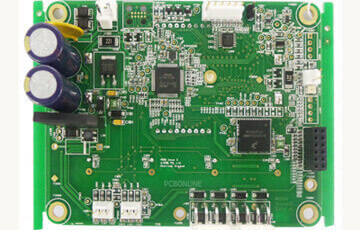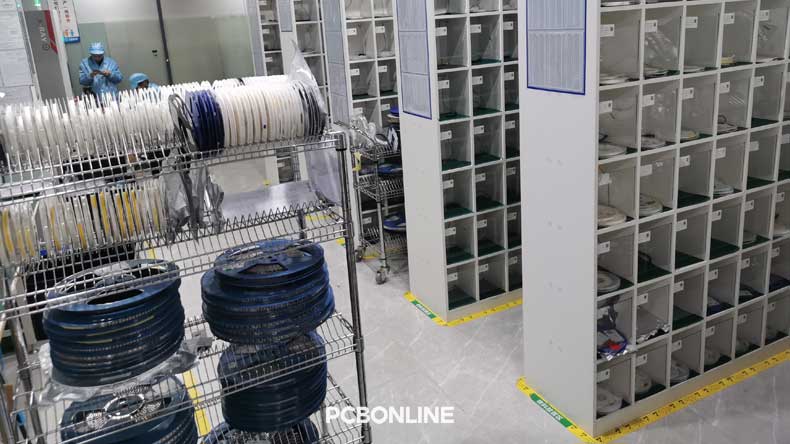
All electronic circuits consist of different electronic components, which determine the overall behavior and performance of the circuit. These components are classified on various bases and in many categories. One crucial factor that distinguishes these electronic components, is the classification into passive or active components. The difference between active and passive elements might be unclear to many, let's dive into this article to understand the difference!
Active Components
An active component refers to a device that delivers power to the circuit in the form of voltage or current. Examples of active devices include vacuum tubes, transistors, SCRs (silicon-controlled rectifiers), and TRIACs.
Active components are integral parts of a circuit and rely on an external power source to control or modify electrical signals.
In the case of a transistor, the current through the transistor is determined by the amount of current in one of its terminals. It means that the current through the transistor will change based on the input currents, this dynamic property of a transistor makes it an active device.
Passive Components
The electronic components that cannot control current based on another electrical signal, are categorized as passive components. This classification includes resistors, capacitors, inductors, transformers, etc.
Passive components are the ones that operate within a circuit without requiring an external source, which means that their function does not change through an external signal. These components use their inherent properties to regulate electrical signals.
For instance, resistors limit the electron flow without introducing additional electricity into the system, the 10Ohm resistor will offer the same resistance for power supply of 5V, 10V, 15V, and so on.
Difference between Active and Passive Components
To summarize the differences between the two classes of electronic components, the following table will give concise information.
|
Aspects of differences
|
Active components
|
Passive components
|
|
Definition
|
Active components need external power supply to operate
|
Passive components do not need external supply to work
|
|
Power gain
|
Capable of providing power gain
|
Incapable of providing power gain
|
|
Control over current or voltage
|
Can control the flow of current or voltage
|
Cannot control the flow of current or voltage
|
|
Function
|
Deliver power to the circuit
|
Consume power from the circuit
|
|
Example
|
Transistor, SCR, FETs, etc.
|
Resistors, capacitors, inductors, etc.
|
Below is a detailed explanation of the differences.
Active Components vs Passive Components
Active components are designed to control or amplify electrical signals. This is why they require an external power supply because the signal manipulation process involves the consumption of electrical energy.
On the other hand, passive components, like resistors, capacitors, and inductors, do not actively control or amplify signals. They interact with the electrical energy in the circuit but do not consume power like active components do.
Passive elements do not have the inherent capability to generate or control electrical energy.
Power Gain
Active components have power gain exceeding unity, allowing signal amplification. In comparison, passive components lack this capability.
Active components require an external power source which allows them to control and manipulate electrical signals actively.
For instance, let's understand why transistors can amplify signals. A transistor is a semiconductor device. It can control the flow of electrical current between its terminals.
Consider BJT (Bipolar Junction Transistors) here, which consists of three layers: emitter, base, and collector. These three layers along with the symbol of BJT are shown in the next figure. The input signal is applied to the base of the transistor. This signal controls the flow of current between the other two terminals, named collector and emitter. This tendency of controlling current based on input signal is called amplification and this is why transistors are classified as active components.
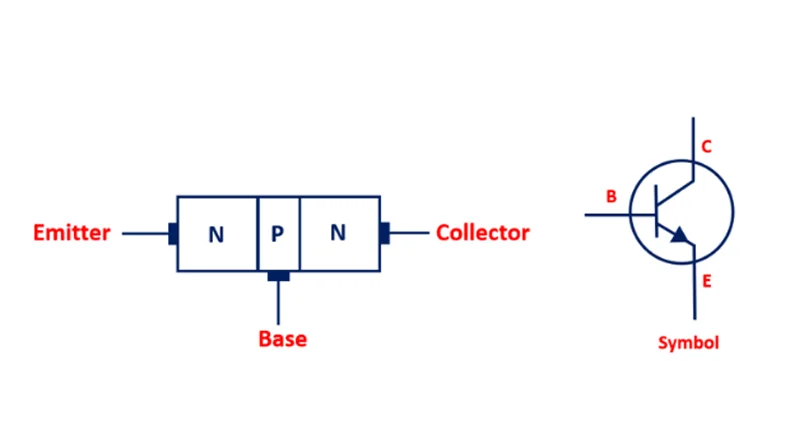
On the other hand, passive components rely on the energy present in the circuit without adding power. Passive elements do not actively control the flow of electrical charge.
To understand the operation of a passive device, let's take an example of a resistor. A resistor is a passive component that hinders the flow of electrical current. It cannot control or amplify signals based on an input signal. When a signal passes through a resistor, the resistor imposes a fixed resistance. This resistance is characterized by Ohm's Law (V = IR), where V is voltage, I is current, and R is resistance.
Control over voltage or current
Continuing the example of BJTs which consist of three semiconductor layers: the emitter, base, and collector. The flow of current in a BJT is controlled by the voltage applied across the emitter and base terminals. This control over current is an inherent property in a transistor.
Similarly, a SCR (Silicon Controlled Rectifier) is also an active device, the symbol and IC of SCR are shown in the next diagram. It passes the current from one terminal (Anode) to the other (Cathode) based on the signal applied on the third terminal, which is called the gate. This represents the active component's property of controlling current or voltage based on some other signal applied to them.
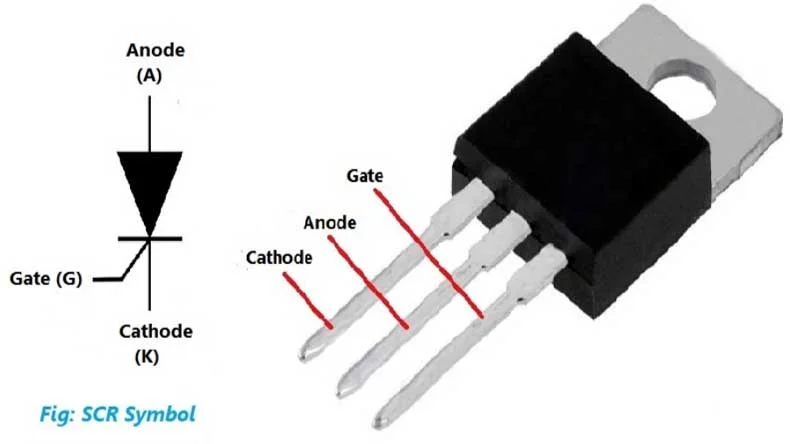
By contrast, a passive component does not actively control voltage or current in the same way that active components do. Instead, they exhibit fixed characteristics.
For example, a resistor offers a fixed resistance and limits the flow of current in a circuit according to Ohm's Law (V=I*R). This law explains that the current limited by the resistance will be dependent on the overall voltage available. Resistors cannot vary their resistance dynamically based on an external current or voltage which was the case for transistors.
Function
When we say active components deliver power to the circuit, it means that they can amplify it somehow.
Considering the example of the BJT, their ability to control the flow of current based on the applied input signal enables them to amplify the signal. The relationship between voltage and current of the transistor is not linear. The next figure shows the VI characteristic curve of a transistor.

The graph represents that only in the saturation region, the relationship between voltage and current is linear. While for the active region which is the amplification mode of the transistor, the relation is not linear. The breakdown region, as the name suggests is the area where the transistor is considered destroyed and out of normal operation. Throughout the three regions, the internal properties of the transistor are varied portraying different characteristics.
Moreover, the other active devices like SCRs, Opamps, etc require some specific voltage or current to enter the working state. This is why, they can control and enhance the electrical signals and add power to the circuit.
On the other hand, for passive components like the resistor, the VI characteristic is strictly linear. Throughout the normal operation of the resistor, the internal properties (resistance) of the resistor remain the same. This curve is a graphical representation of Ohm's law described in the previous section.
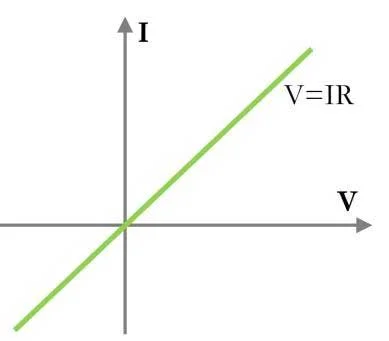
Similarly, passive devices like capacitors and inductors can store energy. The capacitor stores electrical energy in the form of electric charge. The amount of charge stored in it depends upon the available voltage. While the inductor stores magnetic energy based on the current passing through it.
In both cases, the passive components do not need some specific voltage or current to start working.
Thus, the passive components can either dissipate or store energy but cannot enhance or amplify it.
Another example of passive elements is transformers. Transformers are used to distribute electrical energy from one circuit to another. Although the voltage or current is stepped up or stepped down, the total power of the system remains the same, making it a passive element.
Active and Passive Component Images and Symbols
|
Component
|
Name
|
Image
|
Symbol
|
|
Passive
|
Active components need external power supply to operate
|
 |
 |
|
Capacitor
|
 |
 |
|
|
Inductor
|
 |
 |
|
|
Transformer
|
 |
 |
|
|
Crystal oscillator
|
 |
 |
|
|
Thermistor
|
 |
 |
|
|
Active
|
BJT
|
 |
 |
|
FET
|
 |
 |
|
|
SCR
|
 |
 |
|
|
TRIAC
|
 |
 |
|
|
Vacuum tube
|
 |
 |
|
|
OPAMP
|
 |
 |
PCBONLINE - One-Stop PCBA Manufacturer Including Component Sourcing

All electronic components, including active components and passive components, are available to buy from PCBONLINE or included in a PCB (printed circuit board) assembly project.
PCBONLINE is an EMS (electronic manufacturing service) supplier with two large PCB manufacturing bases and one PCB assembly factory. Relying on its EMS PCBA factory, PCBONLINE can take part in co-procurement with other large EMS from original component factories at lower prices.
You can buy any active and passive components from PCBONLINE, including the military-grade and custom-made ones.
Its component warehouse of the PCB assembly factory has more than 100,000 types of passive and active components in stock.
PCBONLINE has rich experience in seeking alternative components reducing your PCBA costs without function or quality sacrifice.
PCBONLINE has hundreds of supply chains worldwide and purchases the most affordable components with regional price differences.
PCBONLINE provides one-stop PCBA manufacturing including supplying the passive and active components mounted on the PCBs.
All the active and passive components and electronic manufacturing are traceable and of the best quality.
All the passive and active components at PCBONLINE are directly from original factories or first-class suppliers. Component sourcing is part of the R&D and PCBA manufacturing services. If you need components and PCB/PCBA manufacturing, contact info@pcbonline.com to get a quote.
ConclusionActive components include all types of ICs, FETs, diodes, etc. Passive components include resistors, capacitors, inductors, transformers, etc. The differences between active and passive components lie in several aspects. Active components need an external power supply to work, while passive components do not. Active components amplify the signals and control the current or voltage, while passive components do not. if you have questions about passive and/or active components, chat from the on-chat window with us.
PCB assembly at PCBONLINE.pdf




